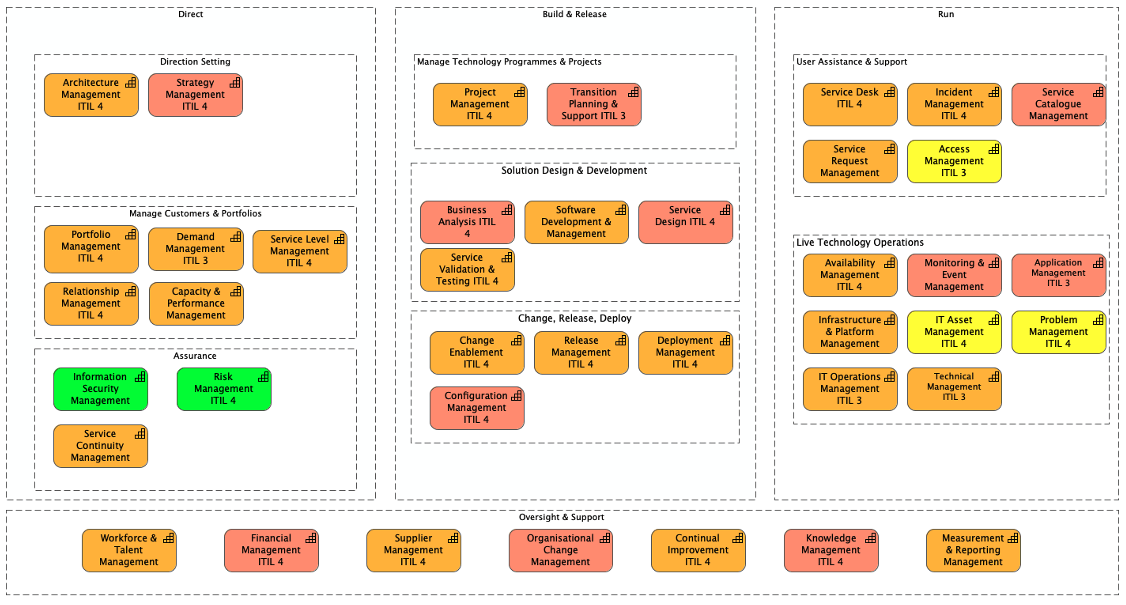Our Methods
Working closely with client stakeholders, our team can help to identify strategic goals based on business drivers, gather service requirements and design the layers of service support including the service layer, the business process layer, the application layer and the infrastructure layer.
We use a framework-based tailored approach to each engagement which typically include appropriate elements of TOGAF, ITIL V3 or ITIL 4, COBIT, PRINCE2 and Agile and also employ elements of structured analysis techniques including business goal modelling, requirements engineering, activity-based costing and BPMN etc.
Some typical (anonymised) case-specific examples of artefacts produced are illustrated below. These are indicative of the underlying work that we undertake and are usually accompanied by underpinning analysis and explanatory narrative.











